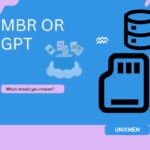
In the realm of digital communication, the significance of efficient internet traffic exchange has escalated with the surge in global cloud content. With over 5.18 billion internet users as of April 2023, and a monthly internet traffic forecast to reach 150.7 exabytes, predominantly fueled by video content, the architecture of the internet, much of which is built on Unix and Linux systems, stands as the backbone of this digital expansion. These operating systems, known for their stability, security, and scalability, play a crucial role in the infrastructure supporting peering technologies. Remote Peering, in particular, benefits from the robustness and flexibility provided by Unix/Linux-based systems, offering a streamlined and cost-effective solution for global connectivity.
Understanding Internet Peering
The internet, a complex network of networks, operates efficiently due to the seamless interconnection of various networks, many of which are powered by Unix and Linux. These systems facilitate the direct exchange of traffic between networks at Internet Exchange Points (IXPs), enhancing internet performance by enabling efficient data exchange with fewer hops.
Direct vs. Remote Peering
While Direct Peering necessitates physical presence at an IXP and significant hardware investments, Remote Peering eliminates this need, allowing for connection to IXPs without physical presence. This transition is significantly facilitated by Unix/Linux-based systems, which offer the tools and technologies to manage complex networking operations remotely. This includes the use of SSH for secure command-line access, network configuration tools, and advanced scripting capabilities, making Remote Peering a feasible and attractive option for global organizations.
The Mechanics of Remote Peering
Remote Peering leverages advanced networking technologies, many of which are developed and run on Unix/Linux systems. These operating systems offer the performance and security needed to handle the virtual presence of an organization at an IXP. The implementation of VLANs for traffic management over a single physical connection, and dedicated Layer 2 connectivity for secure data transmission, relies heavily on the robust networking capabilities of Unix/Linux.
Technology Behind Remote Peering
The backbone of Remote Peering’s success is the dedicated Layer 2 connectivity, ensuring secure and direct transmission of data. This includes the use of virtual LANs (VLANs) to segment and manage traffic over a single physical connection, enabling efficient data exchange across multiple IXPs. Unix and Linux systems, with their strong support for network layer operations and virtualization technologies, are integral to deploying and managing these connections. Furthermore, the Network as a Service (NaaS) platforms that simplify peering connections often run on Linux due to its scalability and the extensive network management toolset it provides.
Operational Benefits and Cost Savings
Remote Peering presents numerous operational benefits, notably the reduction in vendor management complexities and the need for physical hardware at IXPs. These advantages are augmented by the Unix/Linux environment, known for its operational efficiency and reliability. The flexibility and powerful networking capabilities of Unix/Linux systems further enhance these benefits, allowing organizations to manage their peering connections more effectively and with greater security.
Case Study: Streamlining Global Connectivity Through Remote Peering
To illustrate the financial and operational benefits of Remote Peering, let’s delve into a detailed case study that encapsulates the transition from Direct to Remote Peering, highlighting the comprehensive savings and efficiencies gained in the process.
Background
A multinational corporation, with a vast digital presence, initially relied on Direct Peering to maintain its global network connectivity. This approach required the company to establish and manage a physical Point of Presence (PoP) at multiple Internet Exchange Points (IXPs) across Europe and Asia. The traditional Direct Peering method involved significant investments in hardware, colocation fees for space within each IXP facility, and ongoing maintenance costs. Additionally, the company faced complexities in vendor management and operational inefficiencies due to the need for separate connections and contracts with each IXP.
Transition to Remote Peering
Seeking to optimize its network operations and reduce costs, the corporation decided to transition to Remote Peering, leveraging a service provider with a robust global network infrastructure. This strategic move eliminated the necessity for physical presence at the IXPs and the associated hardware investments. The Remote Peering solution allowed the company to access multiple IXPs through a single interconnection facilitated by the service provider, dramatically simplifying the peering process.
Operational and Financial Benefits
Reduced Complexity
By adopting Remote Peering, the corporation streamlined its network management by reducing the number of physical ports and cross-connects required. This transition simplified vendor management, as the company now interacted with a single service provider instead of multiple IXPs, each with its own set of requirements and contracts.
Cost Savings
The move to Remote Peering offered significant financial benefits. The company saved on colocation and hardware deployment costs, as it no longer needed to maintain a physical presence at each IXP. Additionally, operational costs were lowered due to the reduced need for on-site maintenance and the management of multiple IXP relationships.
Example: European Expansion
Initially, the corporation had five separate 10G ports for Direct Peering with different IXPs within Europe, incurring annual costs that included colocation fees, hardware investments, and maintenance. By consolidating these services into a single 100G interconnection port through a Remote Peering provider, the company not only enhanced its network capacity but also achieved a 40% reduction in total annual costs. This consolidation significantly reduced the complexity of managing multiple IXPs and streamlined the company’s global connectivity strategy.
Conclusion
This case study underscores the transformative impact of Remote Peering on global network connectivity. By transitioning from Direct to Remote Peering, the corporation not only achieved considerable cost savings but also enhanced its operational efficiency and scalability. The strategic move to Remote Peering facilitated easier management, faster deployment, and a more agile response to the dynamic demands of the digital landscape, exemplifying the practical and financial advantages of adopting modern networking techniques.
The Future of Internet Connectivity
The transition to Remote Peering represents a forward-looking solution that not only addresses the challenges of the digital era but also leverages the strengths of Unix and Linux systems to ensure robust, secure, and efficient global internet connectivity. Unix and Linux, with their unparalleled reliability and advanced networking features, are at the heart of Remote Peering technologies, enabling organizations to maintain high-performance connections across the globe. As we embrace the future of internet connectivity, the role of Unix/Linux in supporting and enhancing Remote Peering technologies remains pivotal, exemplifying the critical intersection of traditional operating system strengths with modern networking demands.





